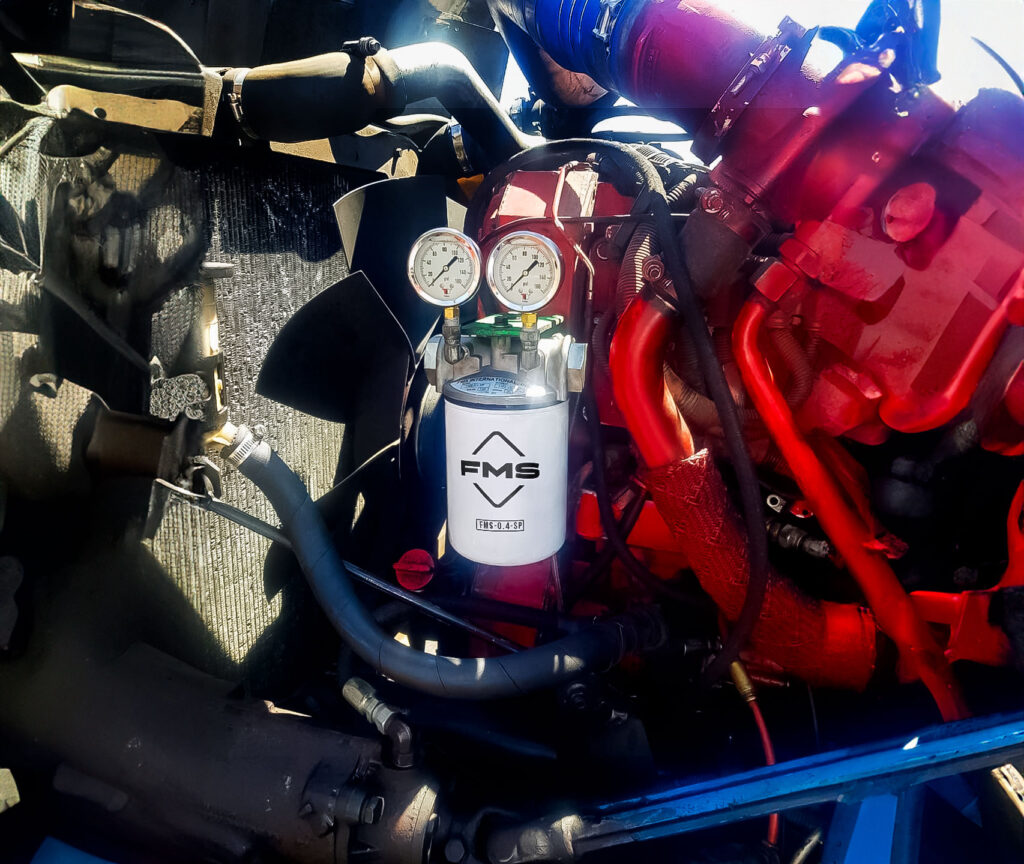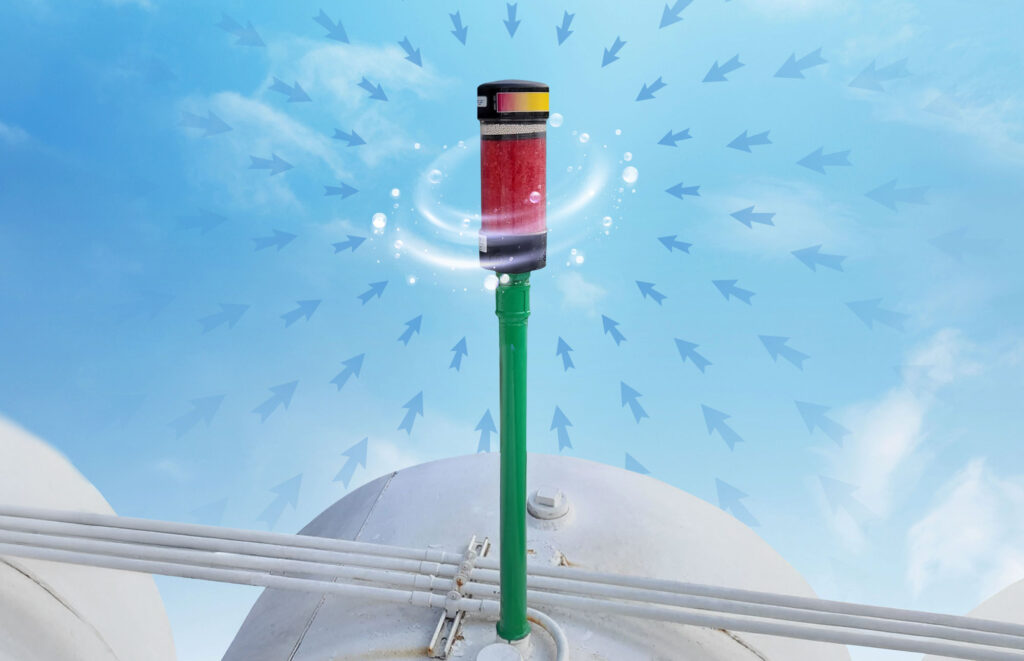Have you ever wondered how particulate contamination
in oil-based fluids is measured and controlled in
industrial applications?
In the 1990s, major Original Equipment Manufacturers (OEMs) established the fuel specifications (gasoline and diesel) necessary to ensure the proper functioning of their equipment. Specifically for diesel, they determined that the recommended maximum contamination level should be 2,500 particles larger than 4 microns per milliliter, which corresponds to code 18 according to the ISO 4406 standard table. These specifications are available in the document WORLDWIDE FUEL CHARTER pages. # 56-57.
However, in Latin America, studies such as those conducted by NORIA have revealed that the average diesel contamination is 40,000 particles larger than 4 microns per milliliter, which, according to the ISO 4406 table, equates to code 22, while the optimal fuel contamination level should be a maximum of 20 particles larger than 4 microns per milliliter (code 11). This is stated in the document Impact of particulate matter and fuel quality on the life of diesel engines and the environment – Part 1 by Ing. Gerardo Trujillo, January 5, 2022, page #6.
THE ISO 4406 STANDARD
ISO 4406 is an international standard that defines the method for particle count analysis in fluids. It was developed by the International Organization for Standardization (ISO) to provide a standardized approach for assessing fluid cleanliness in hydraulic and lubrication systems. The primary objective of ISO 4406 is to give users a clear understanding of the quantity and size distribution of particulate contamination within a fluid.
The standard employs a three-number code to describe the fluid’s cleanliness level. Each number in the code corresponds to a specific particle size range and indicates the number of particles present in the fluid.
Interpreting ISO 4406 codes is essential for evaluating fluid quality and its suitability for specific applications. Original Equipment Manufacturers (OEMs), fluid suppliers, and end users rely on this standard to ensure that fluids meet the necessary cleanliness requirements to protect system components and maintain optimal performance.
To correctly interpret the ISO 4406 code, one must understand the particle size thresholds and the associated classification scale. The codes are typically presented in the format: XX / XX / XX, with each value representing the particle count per milliliter of fluid for particles greater than or equal to a defined size. For instance, an ISO 4406 code of 15/13/10 indicates:
– The first number (15) corresponds to particles ≥ 4 microns per milliliter of fluid.
– The second number (13) corresponds to particles ≥ 6 microns per milliliter.
– The third number (10) corresponds to particles ≥ 14 microns per milliliter.
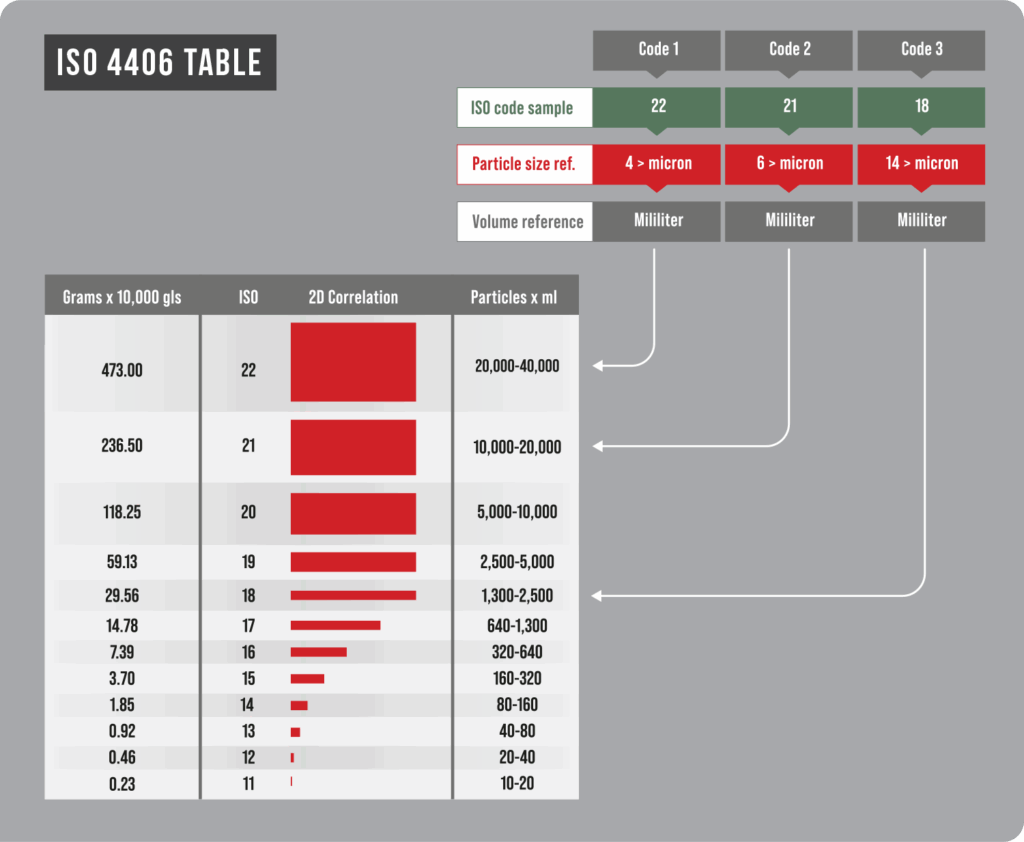
APPLICATIONS
HYDRAULIC SYSTEMS

LUBRICATION SYSTEMS
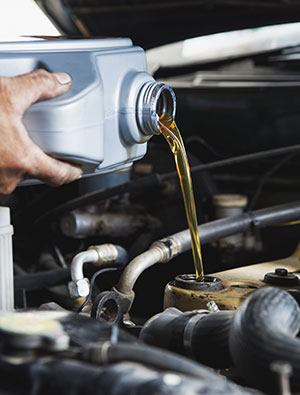
AUTOMOTIVE INDUSTRY


HYDRAULIC
SYSTEMS
Hydraulic systems heavily rely on fluid cleanliness to prevent premature wear of components, valve blockages, and other issues that could reduce the system’s efficiency and lifespan.
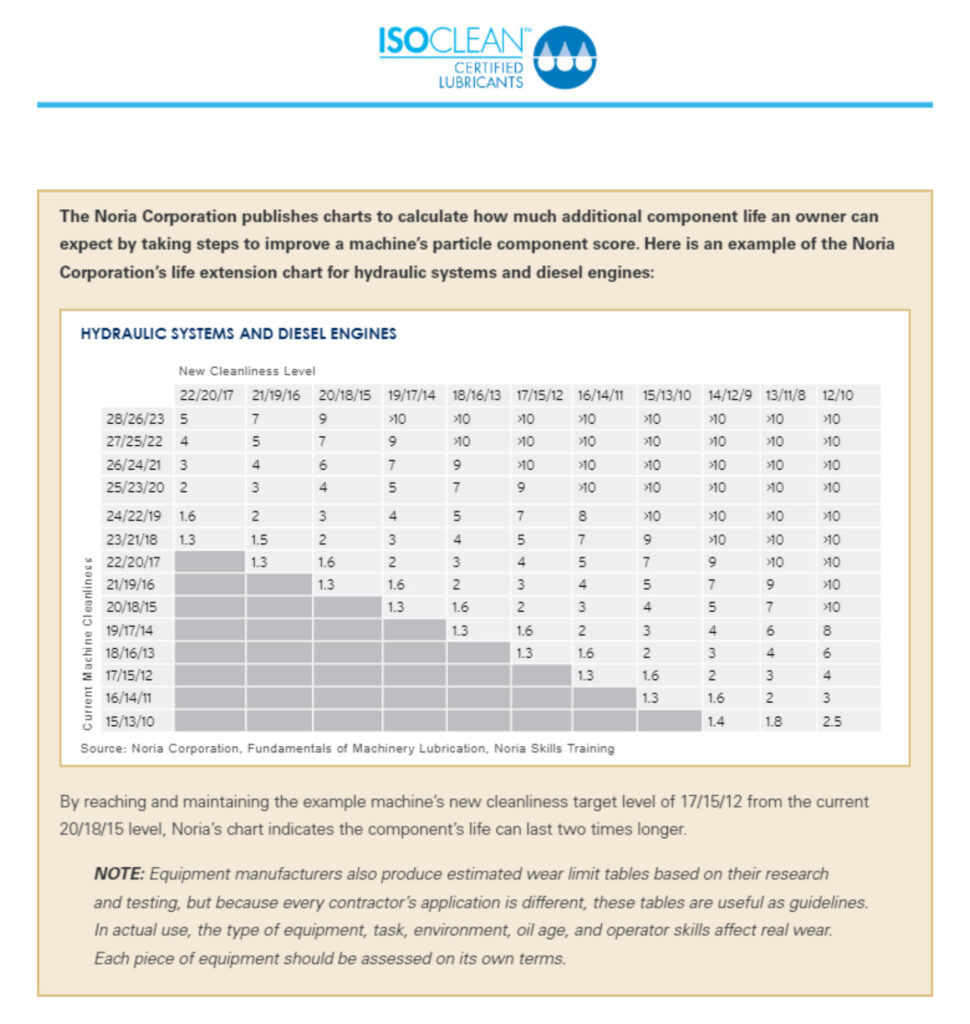
*** Companies specialized in the handling of oily fluids, such as Vickers, Chevron, Shell, and Noria, use these charts as a reference to determine the extension or reduction of service life based on ISO 4406 codes.

LUBRICATION
SYSTEMS
In lubrication systems, the presence of particles in the oil can cause significant damage to mechanical components. The application of the ISO 4406 standard enables users to ensure that the lubricating oil meets the necessary cleanliness standards to protect bearings, gears, and other critical elements.

AUTOMOTIVE
INDUSTRY
In the automotive industry, the use of clean fluids is essential to ensure efficient operation and extend the lifespan of engines, transmissions, and hydraulic systems found in vehicles and heavy machinery
By following the standards set by the ISO 4406 standard, costly downtime, repairs, and premature component replacements can be avoided.
Conclusion
In summary, the ISO 4406 standard is an essential tool for evaluating the cleanliness of fluids used in hydraulic, lubrication, and other industrial applications. Proper interpretation and application of this standard are critical to ensuring optimal performance and the integrity of systems that depend on these fluids. If you need more information on how to interpret and apply the ISO 4406 standard in a specific context, feel free to request further details.
